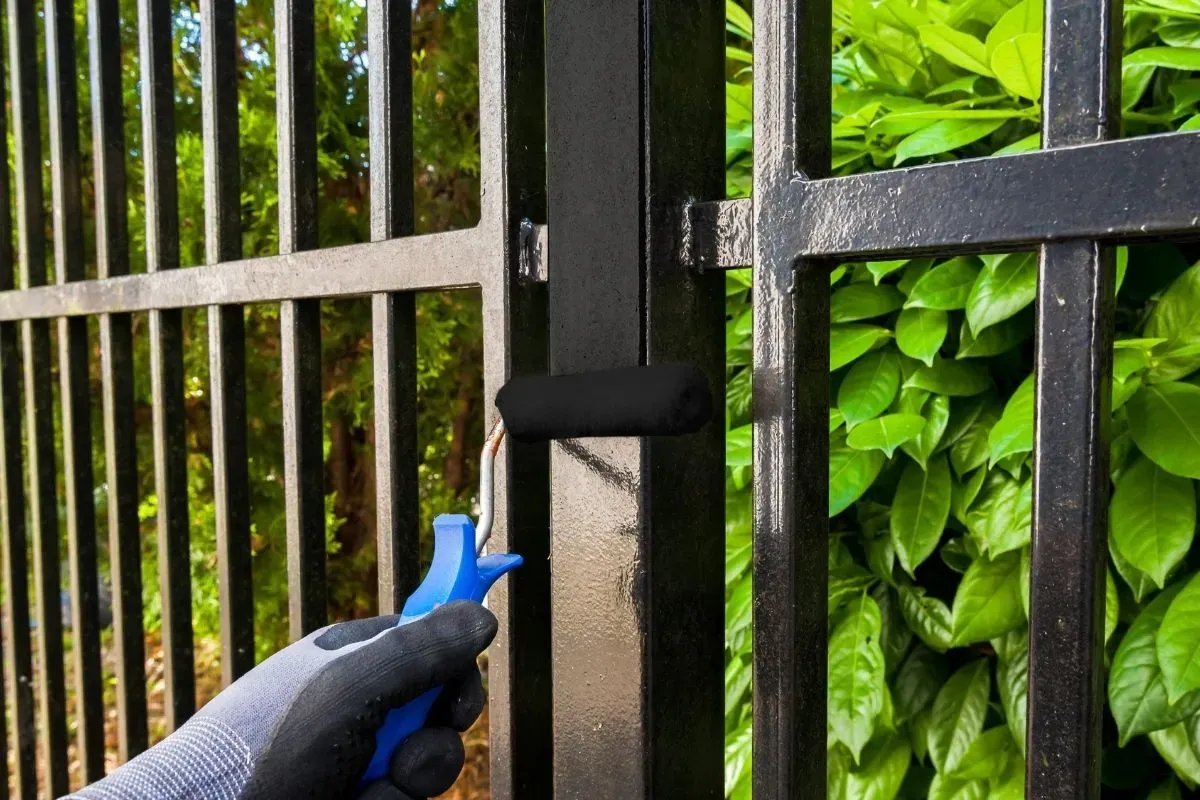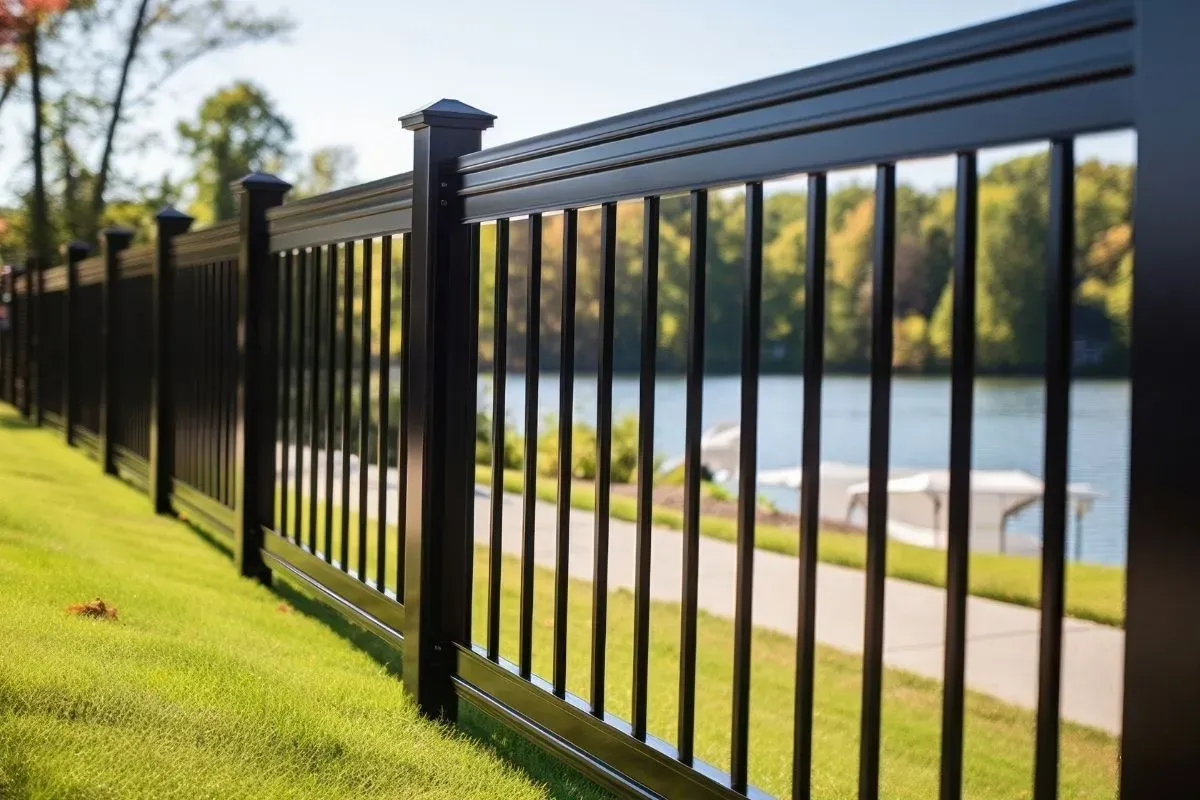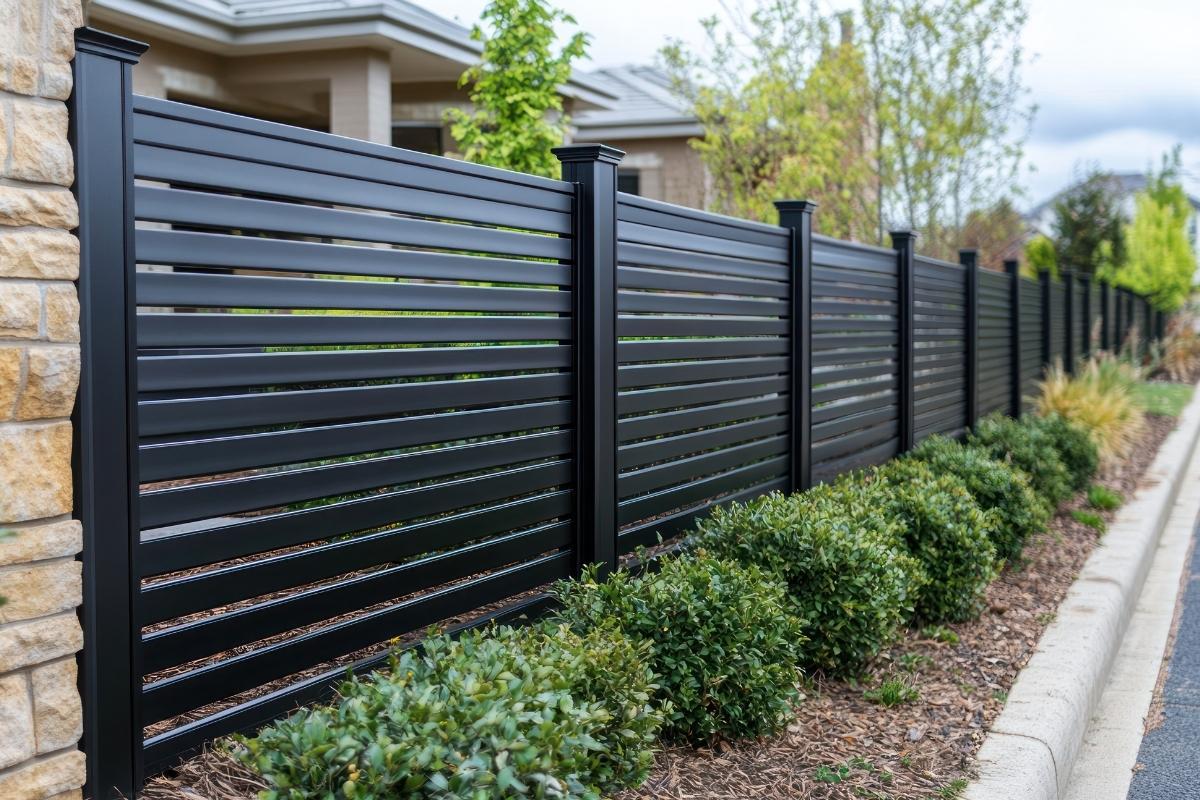A new aluminum fence can increase a property’s visual appeal, security, and privacy. Proper installation is the key to enjoying those benefits. Bad installation can lead to a prematurely damaged fence, flooding, power outages, lawsuits, and more.
All of that may sound extreme, but it’s the truth. Property lines, utilities, storm flows, and the correct materials are some of the many considerations that come with a successful installation.
Today, we’re discussing how to install an aluminum fence. We’ll answer common questions, go over all the steps for preparation, and break down the installation process.
How hard is it to install an aluminum fence?
An aluminum fence is one of the easiest types of fencing to install. It is typically a post-and-panel configuration that is lighter weight than other types.
That said, it is not an ideal mission for a first-time DIY’er. It’s better suited to those with intermediate home project experience.
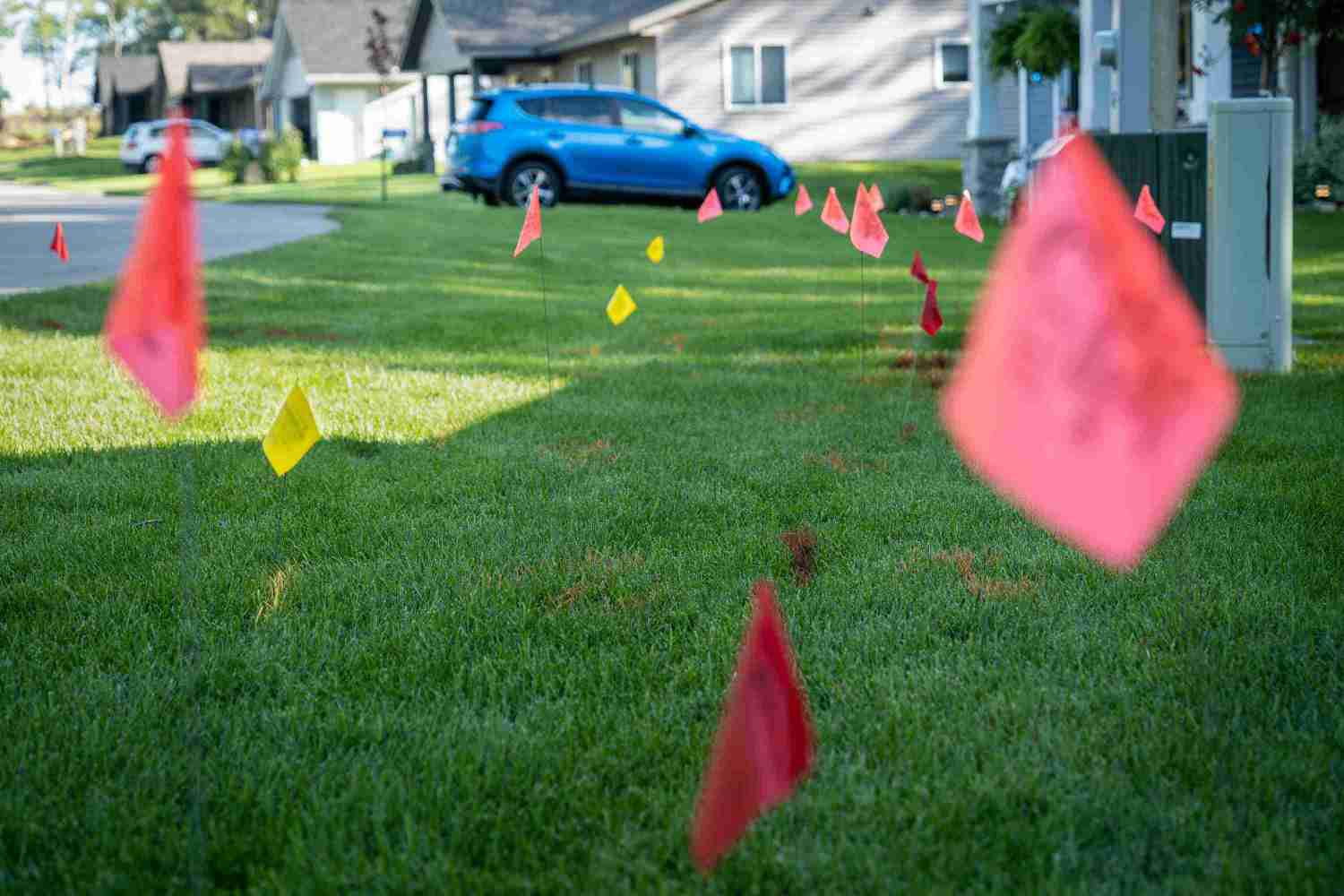
Aluminum Fence Pre-Installation Checklist
The preparation stage is where we can avoid a lot of bad install backlash. Review the following before digging a single hole:
- Check relevant local codes
- Confirm property lines
- Mark off utilities
- Measure the area
- Clear the way
- Gather supplies and materials
Check relevant local codes. Review zoning ordinances in your county for regulations concerning fence height and location. The county or town you reside in can also tell you if you need to secure a building permit.
Confirm property lines. While you’re looking at codes, see if the town/county has your property boundaries on record and compare it to what’s on your deed. You may also want to have a property line survey done If you don’t have access to see your property lines, or if your property hasn’t been surveyed in a long time.
If you belong to a homeowner’s association, notify them as well. Many HOAs have their own requirements for materials, height, color, and more.
Mark utilities. Check the 811 map and call the appropriate local contact to start. In most cases, someone will mark your utilities within a few days. Red markings are for electricity, yellow is for gas, orange is used for communications, and blue is for water.
Measure the area. Measuring is one of the most important steps since it will dictate how much fencing to buy. Read our step-by-step guide on measuring your yard for a fence.
Clear the way. From there, remove any obstructions in the way of your new perimeter. Remove debris and vegetation on the ground and prune back any growth that hangs in the fence’s way.
Gather materials and other supplies. Create a list and ensure everything is in place for the main install. What you need will depend on your unique project, but here is an example:
| Tools for Fence Installation | Materials for Fence Installation |
| Tape measure | Cement mix |
| Gloves | Gravel (if adding to bottom of post holes) |
| Mallet | Stakes |
| Shovel | Fence panels and rails |
| Drill | Fence posts |
| Saws (circular and/or hacksaw) | Mounting hardware |
| Post hole digger | Gate panel w/ hardware |
| Spade | Stringline/marking spray |
| Level | |
| Wheelbarrow |
How to Install an Aluminum Fence
With preparation carefully completed, it’s time to learn how to install an aluminum fence.
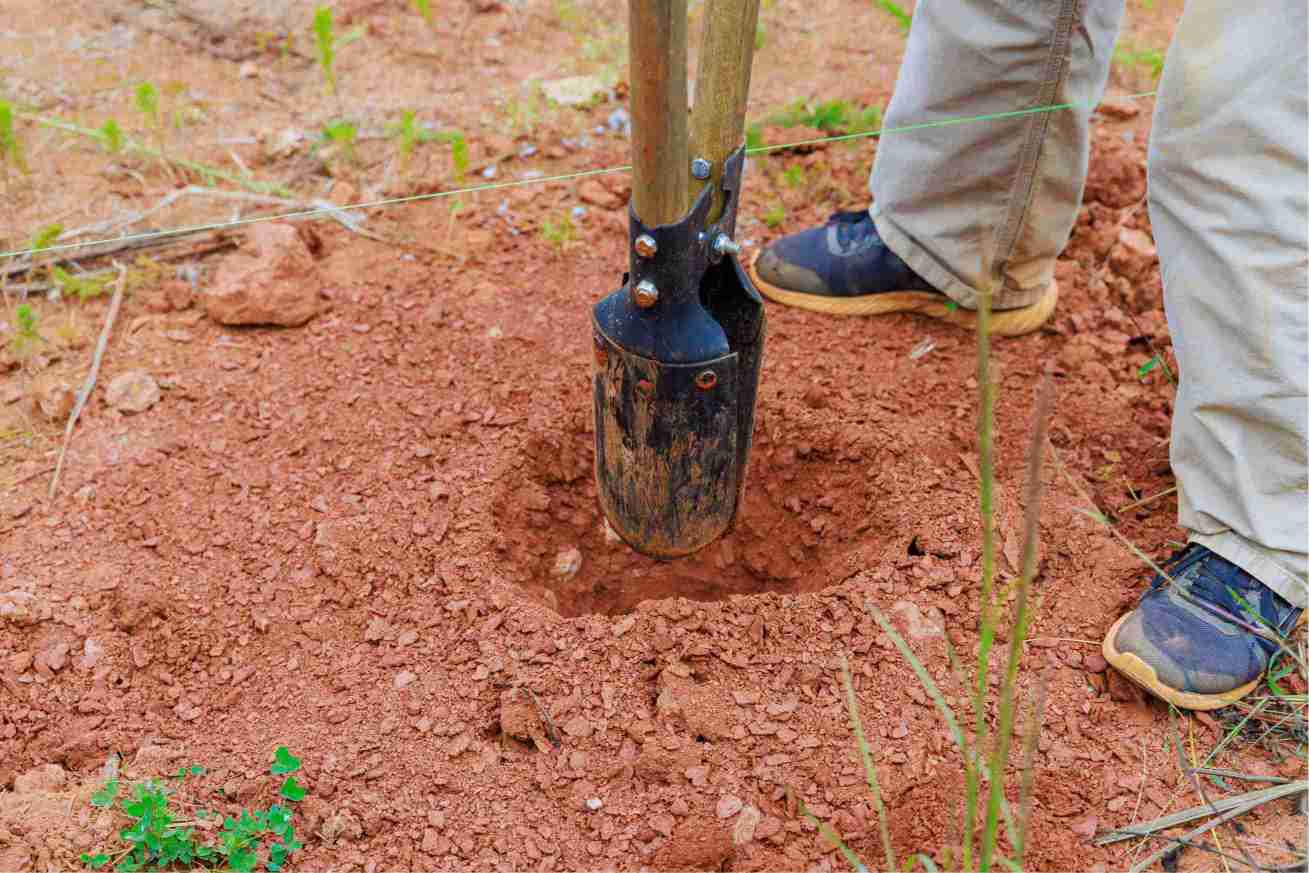
Installing the fence posts:
The perimeter should be outlined with string. Use marking spray to designate where each post will go. This is where we will dig the post holes, taking care to stay at an appropriate depth. The diameter of the holes depends on the size of the post.
You may also be using different posts on the same fence. Here is a quick review of the types of aluminum fence posts:
- Corner posts. The pre-punched areas in these posts are specifically designed to create sharp angles in your fence line.
- Line posts. Line posts are punched on either side and are used for the straight portion of your perimeter.
- End posts. Punches are only on one side, with a blank side for a clean finish to the end of a fence.
- Gate posts. A heavier, sturdier post for hanging a gate and accommodating its hardware.
To learn more about fence posts, check out our guide on types of fence posts.
Do you set aluminum fence posts in concrete?
Yes, not only is setting aluminum fence posts a common practice, it’s proven to be effective.
How to pour concrete for the fence posts:
Mix and pour concrete evenly into the post holes and set the posts. This step takes time and expertise. The concrete’s evenness and the posts’ alignment along the entire perimeter make a huge difference in the outcome. Ideally, at least two people will be on this task. Having one person pour concrete while another keeps the post in place and checks pour results with a level. Which is much more efficient than going it alone.
Allow the concrete to dry completely before proceeding. Most use quick-drying formulas that are set in an hour or two. Many use Sakrete or Quikrete fast-setting mixes.
Installing rails and panels:
This step varies quite a bit depending on the chosen fencing. The rails and panels are assembled with included hardware.
One advantage of aluminum fencing is that the rails and panels come together without much additional work on your part. They typically come with notches and punches ready to fit together by design.
Tips on how to install aluminum fence gates:
If you’re including a gate, take the time to measure twice and ensure you install the hinges at the correct heights. Use a level on the gate to check your work.
The gate is the one part of the fence that gets handled, manipulated, and moved regularly. Additional attention can prevent premature wear. Consult a pro if you’re unsure whether or not your gate posts should be deeper than the rest.
Should aluminum fences touch the ground?
No, your fence should not touch the ground. There should be at least two inches of clearance. Installing fencing flush to the ground can reduce its lifespan and prevent maintenance of the ground under and around it.
If you are dealing with slopes and other uneven terrain, “stepping” is a common solution. Custom panels may be the only solution if you’re serious about eliminating gaps above slopes or dips.
Can you install an aluminum fence without concrete?
Yes, you can fill post holes with gravel or dirt instead of concrete, but the fence will not be nearly as strong. It could collapse during weather events and is a lot easier for trespassers to breach.

What is the lifespan of an aluminum fence?
It depends on the quality and environment, but a properly installed and maintained powder-coated aluminum fence can last for decades. Some say aluminum fences can last 50 years or more.
For a Longer-Lasting Aluminum Fence, Don’t Cut Corners
Learning how to install an aluminum fence is helpful even if you’re not going to do it yourself. Get a head start on confirming your property lines and local rules, and then give Top Rail Fence a call.
We’ll be there to help you plan and prepare, get the materials you need, and begin installation. Let an experienced professional align your posts and evenly space your panels for secure, aesthetically pleasing perimeters that last.
